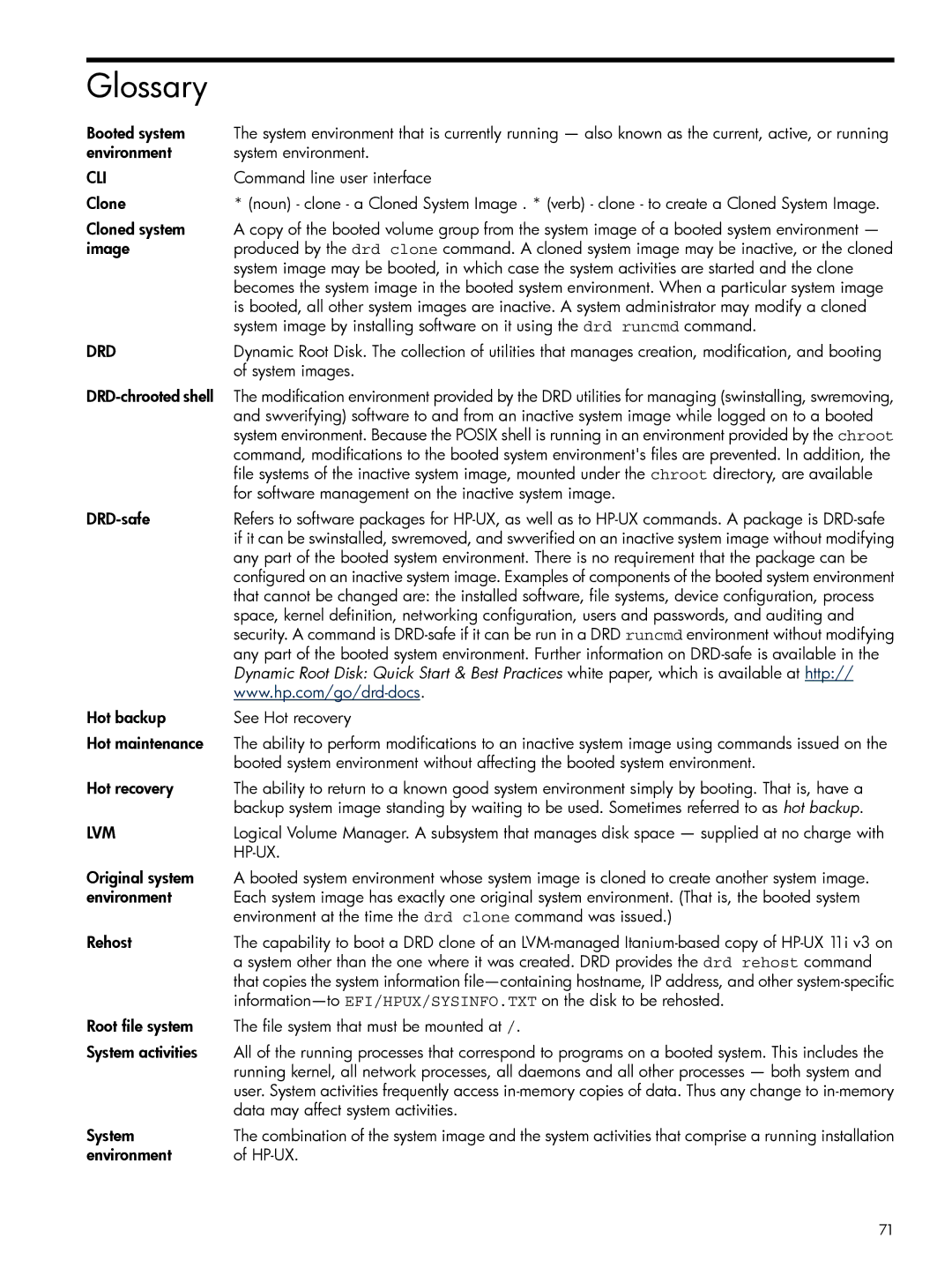Glossary
Booted system | The system environment that is currently running — also known as the current, active, or running |
environment | system environment. |
CLI | Command line user interface |
Clone | * (noun) - clone - a Cloned System Image . * (verb) - clone - to create a Cloned System Image. |
Cloned system | A copy of the booted volume group from the system image of a booted system environment — |
image | produced by the drd clone command. A cloned system image may be inactive, or the cloned |
| system image may be booted, in which case the system activities are started and the clone |
| becomes the system image in the booted system environment. When a particular system image |
| is booted, all other system images are inactive. A system administrator may modify a cloned |
| system image by installing software on it using the drd runcmd command. |
DRD | Dynamic Root Disk. The collection of utilities that manages creation, modification, and booting |
| of system images. |
| The modification environment provided by the DRD utilities for managing (swinstalling, swremoving, |
| and swverifying) software to and from an inactive system image while logged on to a booted |
| system environment. Because the POSIX shell is running in an environment provided by the chroot |
| command, modifications to the booted system environment's files are prevented. In addition, the |
| file systems of the inactive system image, mounted under the chroot directory, are available |
| for software management on the inactive system image. |
| Refers to software packages for |
| if it can be swinstalled, swremoved, and swverified on an inactive system image without modifying |
| any part of the booted system environment. There is no requirement that the package can be |
| configured on an inactive system image. Examples of components of the booted system environment |
| that cannot be changed are: the installed software, file systems, device configuration, process |
| space, kernel definition, networking configuration, users and passwords, and auditing and |
| security. A command is |
| any part of the booted system environment. Further information on |
| Dynamic Root Disk: Quick Start & Best Practices white paper, which is available at http:// |
| |
Hot backup | See Hot recovery |
Hot maintenance | The ability to perform modifications to an inactive system image using commands issued on the |
| booted system environment without affecting the booted system environment. |
Hot recovery | The ability to return to a known good system environment simply by booting. That is, have a |
| backup system image standing by waiting to be used. Sometimes referred to as hot backup. |
LVM | Logical Volume Manager. A subsystem that manages disk space — supplied at no charge with |
|
|
Original system | A booted system environment whose system image is cloned to create another system image. |
environment | Each system image has exactly one original system environment. (That is, the booted system |
| environment at the time the drd clone command was issued.) |
Rehost | The capability to boot a DRD clone of an |
| a system other than the one where it was created. DRD provides the drd rehost command |
| that copies the system information |
| |
Root file system | The file system that must be mounted at /. |
System activities | All of the running processes that correspond to programs on a booted system. This includes the |
| running kernel, all network processes, all daemons and all other processes — both system and |
| user. System activities frequently access |
| data may affect system activities. |
System | The combination of the system image and the system activities that comprise a running installation |
environment | of |
71
